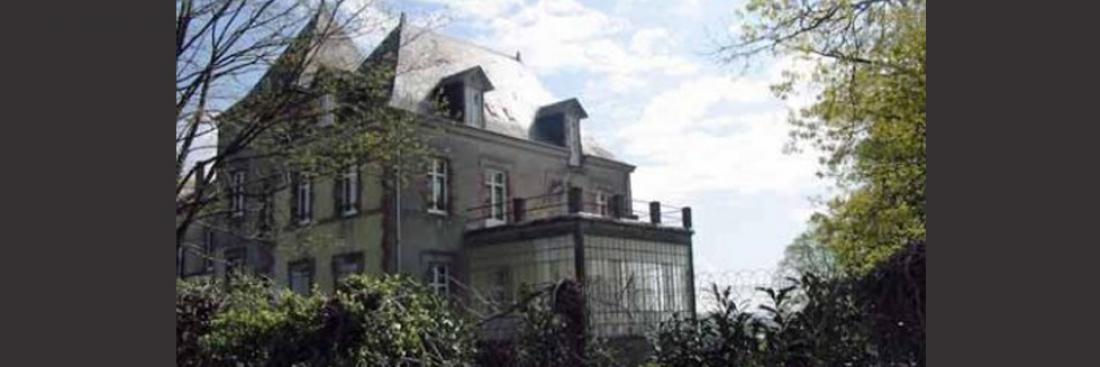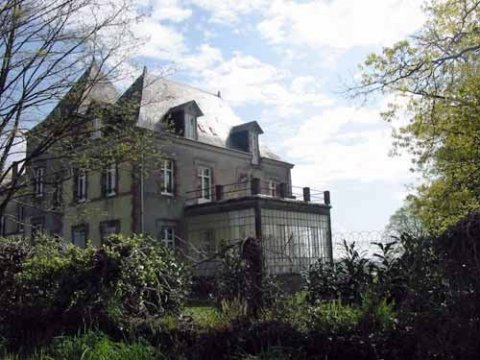The roundup of 26 August 1942

Six weeks after the Vel d’Hiv roundup in the Paris area, on 26 August 1942 a roundup hit foreign Jewish refugees in the department of Creuse.
Laval had agreed to hand over to the Germans 10 000 Jews living in the “free” zone, and each department had to supply its quota. The prefect of Creuse drew up a list of Jews to detain.
Early on the morning of 6 August, the gendarmes of Grand-Bourg arrived in Chabannes and arrested six people: four teachers and two children.

Château de Chabannes children’s home
The same day, five gendarmes from Pontarion arrived in the hamlet of Combes, in the commune of Saint-Hilaire-le-Château, and arrested Henri Wolff and his parents, who had taken refuge in a little cottage there.
Ninety-one people were arrested on 26 August 1942, including 15 children. They were held at La Souterraine, Dun, Châtelus-Malvaleix, Bonnat and Guéret, before being taken to Boussac. In Guéret, a coach was requisitioned from the company Marquet to transport them.
At Boussac, the prefect had two families including four children released, on the grounds that their fathers, of German origin, had enlisted in September 1939 in the ranks of the French Army.
From Boussac, they were taken to the Nexon camp, then to Drancy, on their way to Auschwitz. Three days after their arrest, they were deported in Convoy 26. After three days and three nights crammed into cattle trucks, of the 1005 people who left Drancy, 987 survived.
Henri Wolff’s parents were gassed on arrival at Auschwitz. Henri himself, however, survived three years in the antechambers of death. He was one of three survivors of the roundup.
The roundup of 1 September 1942
Six days after the mass roundup of 26 August, 20 children were arrested at the children’s homes of Masgelier and Chabannes and taken to La Souterraine railway station, where they were put on a train to the Rivesaltes camp in the eastern Pyrenees.
The Garel network
The OSE (Oeuvre de Secours aux Enfants) was an official organisation and the authorities knew every detail of what it did. From August 1942, with the increasing frequency of roundups and arrests in the unoccupied zone, the OSE’s management realised that its children’s homes could become traps and decided to set up an underground organisation, which they put in the hands of Georges Garel, a member of the Lyon Resistance. The purpose of the Garel network was to progressively empty the OSE’s children’s homes and hide the children with non-Jews, to save them from deportation.
The NAP: infiltrating the public authorities
The NAP (Noyautage des Administrations Publiques) came into being in September 1942, at the suggestion of Claude Bourdet (of the Combat movement) to Jean Moulin. But it was not developed properly until the movements of the southern zone (Combat, Libération and Franc-Tireur) merged to form the Mouvements Unis de Résistance (MUR), in early 1943. From then on, it expanded into the occupied zone. It was not until late spring 1943 that the first NAP leader for the department of Creuse was appointed. At the end of that year, he handed over to François, who went on to become head of the local maquis (rural guerrilla group), head of the CFL (Corps Francs de la Libération), and finally leader of the FFI (French Forces of the Interior) in the department. Most of the infiltration work was done by Henry Castaing, a police superintendent with the Department for General Intelligence, who was also a sector head of the Ajax resistance network. His role facilitated contact with government departments, and many high-ranking civil servants joined the Resistance, including: the incumbent prefect (head of the departmental authority) as of July 1943, with the caution his position required; his general secretary, André Vy, with less discretion (Vy would be arrested, deported and die in the concentration camps); a number of senior officials of the prefecture; the chief of police and most of his officers; nearly all of the inspectors in the intelligence department; one senior officer of the gendarmerie and several of his subordinates; post office officials.
The NAP was very active and highly effective in Creuse.
Today, the children of Chabannes are scattered all over the world.
Félix Chevrier died in 1962, in obscurity. His actions to save Jewish children would not be discovered until years later.
The Paillassou sisters were honoured with the title of “Righteous Among the Nations” in March 1983, and awarded a medal. A tree in an avenue of the Mountain of Remembrance, in Jerusalem, bears their names.
In May 1996, a reunion of former children’s home residents and staff was held at Chabannes. Many of them had not been back to Chabannes since autumn 1943.
Today, in Boussac, an official plaque recalls how the former munitions factory was used as an internment centre. However, contrary to what it says, 91 Jews were arrested on 26 August across the department, and 52 of them deported, including 18 children. There were only three survivors.
The plaque reads:
“ON 26 AUGUST 1942, 52 JEWS, INCLUDING 13 CHILDREN, RESIDENTS OF THE DEPARTMENT OF CREUSE, WERE ARRESTED AT THEIR HOMES AND INTERNED IN THE BOUSSAC MUNITIONS FACTORY. ON 29 AUGUST, THEY WERE HANDED OVER TO THE NAZIS BY THE VICHY GOVERNMENT AND DEPORTED TO THE AUSCHWITZ CONCENTRATION CAMP.
LEST WE FORGET”
Today, the homes are in ruins. Some time ago, the local council was interested in buying the Château de Chabannes, but it ended up in the hands of English owners.
Source: Department for Tourism, Regional Representation for Limousin
External website: Fondation pour la Mémoire de la Déportation

